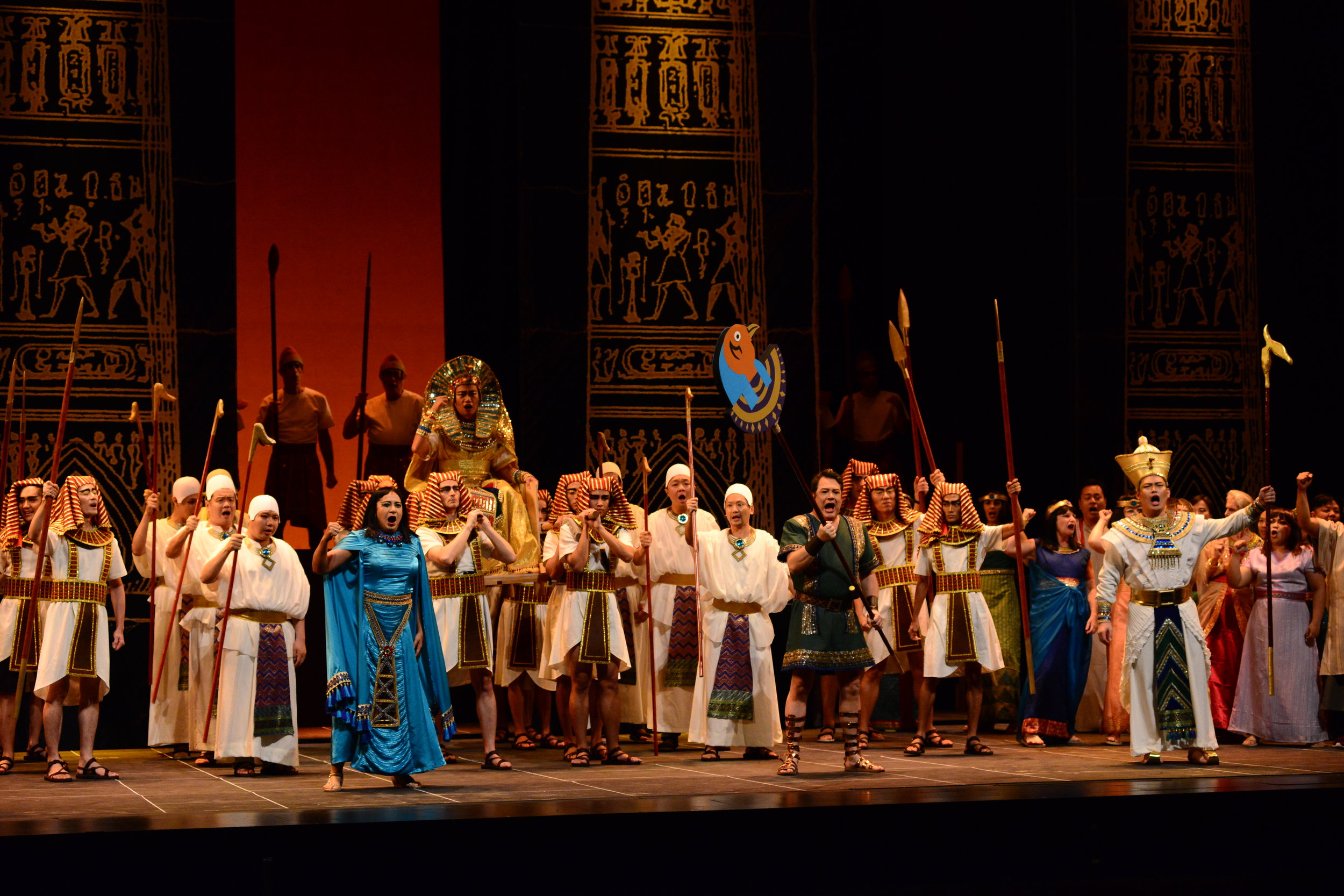Thai conductor’s debut in Singapore’s high-budget spectacle
BY STAN GAYUSKI
Thailand’s dean of opera, Somtow Sucharitkul, has just conducted five performances of Aïda in Singapore in (at 1 million SGD) the most expensive production ever mounted by the Singapore Lyric Opera. Five shows, two casts, hundreds of dancers, chorus, supernumeraries on stage — it was certainly a spectacle.
This reviewer caught the third performance, on June 3, with the more big-name of the two casts, including Norwegian tenor Thomas Ruud, the artistic director herself, Nancy Yuen, in the title role, and Mexican mezzo Grace Echauri as the sizzling Amneris.
Echauri provides an interesting link because her first appearance in the region, in 2004, was in Opera Siam's (then Bangkok Opera’s) own Aïda. That version, with the same conductor, can be watched on Amazon, and provides an interesting comparison with the production here under review. To watch the two productions gives an interesting snapshot of two very different points of view, two approaches to bringing opera to Southeast Asia.
Singapore Lyric Opera’s motto is “Western opera in Singapore.” Opera Siam’s philosophy eschews that in favor of evolving opera towards a more Asian sensibility. Opera Siam’s 2005 production got rid of the Egyptian setting completely, and set the opera during the Ayuthaya-Pegu wars — King Naresuan territory. The same hundreds of singers and epic quality that one associates with Aïda, but a localized look and feel. Apart from the changed location, though, San Francisco Opera’s Richard Harrell went for the familiar Aïda tropes — the innocent slave girl, the furious daughter of the Pharaoh, and so on.
Singapore’s look and feel was in a sense more “traditional”, but director Andrew Sinclair wanted to get through to a more intimate, domestic tragedy. His vision was revisionist — the two female protagonists were conceived as high school age, Radames as intelligent and aware rather than a dumb jock not thinking with his brain. The three seasoned leads succeeded in getting this concept across much of the time, but the production did revert to the standard edition in the big moments where aria and massive ensemble loomed large.
It was those “famous bits" that worked best in Singapore. Nancy Yuen, best known for Puccini, was an unusual casting choice but imbued the arias with a rare fragility and some stunning pianissimo high notes. As Radames, Thomas Ruud was sensitive and possessed a ringing squillo. Grace Echauri, perhaps the most experienced of the cast in her chosen role, invested it with a lot of drama and was the most musically assured of the principals. Of the minor characters, Martin Ng as Amonasro was touching, Alvin Tan as Ramfis was bold-voiced, and Steven Ang as the King played the role as a weakling bullied by priests.
Somtow held the uneven orchestral forces together, starting with a highly nuanced reading of the prelude; he excelled in his interpretation of the big crowd scenes. The orchestra played with gusto, though the trumpets did not seem quite up to the iconic triumphal march. In general the big moments were all spendid and special mention should be made of the oboist in “o patria mia” whose sinuous rendition of the obligato was memorable.
In all, SLO can be proud of what it achieved with this very ambitious project. The huge investment paid off, with an idiomatic conductor and an adventurous director and an accomplish cast and chorus. Sets were minimalist but effective.
*** Stan Gayuski is a member of the International Mahler Society who frequently writes about music in international publications.


